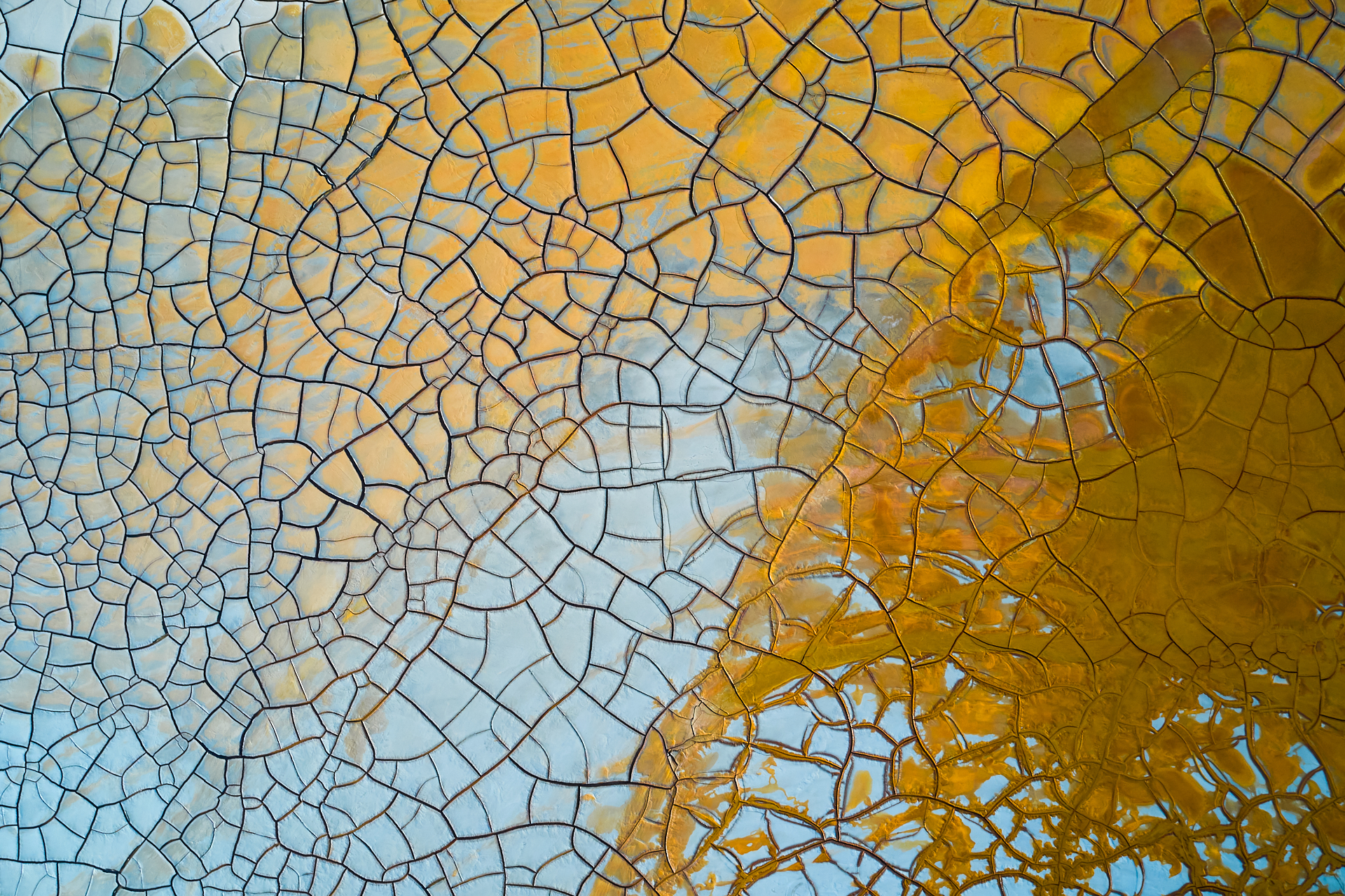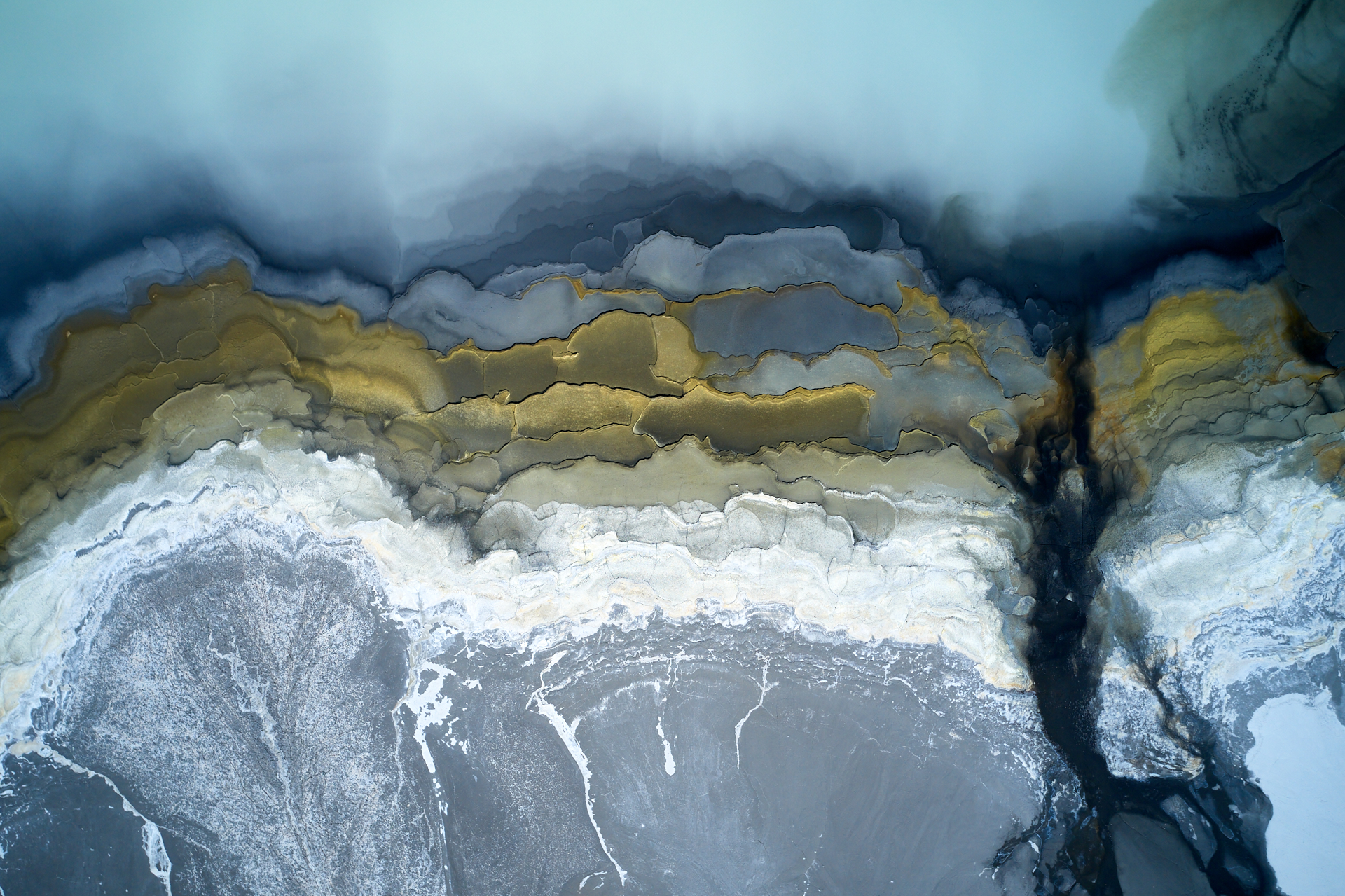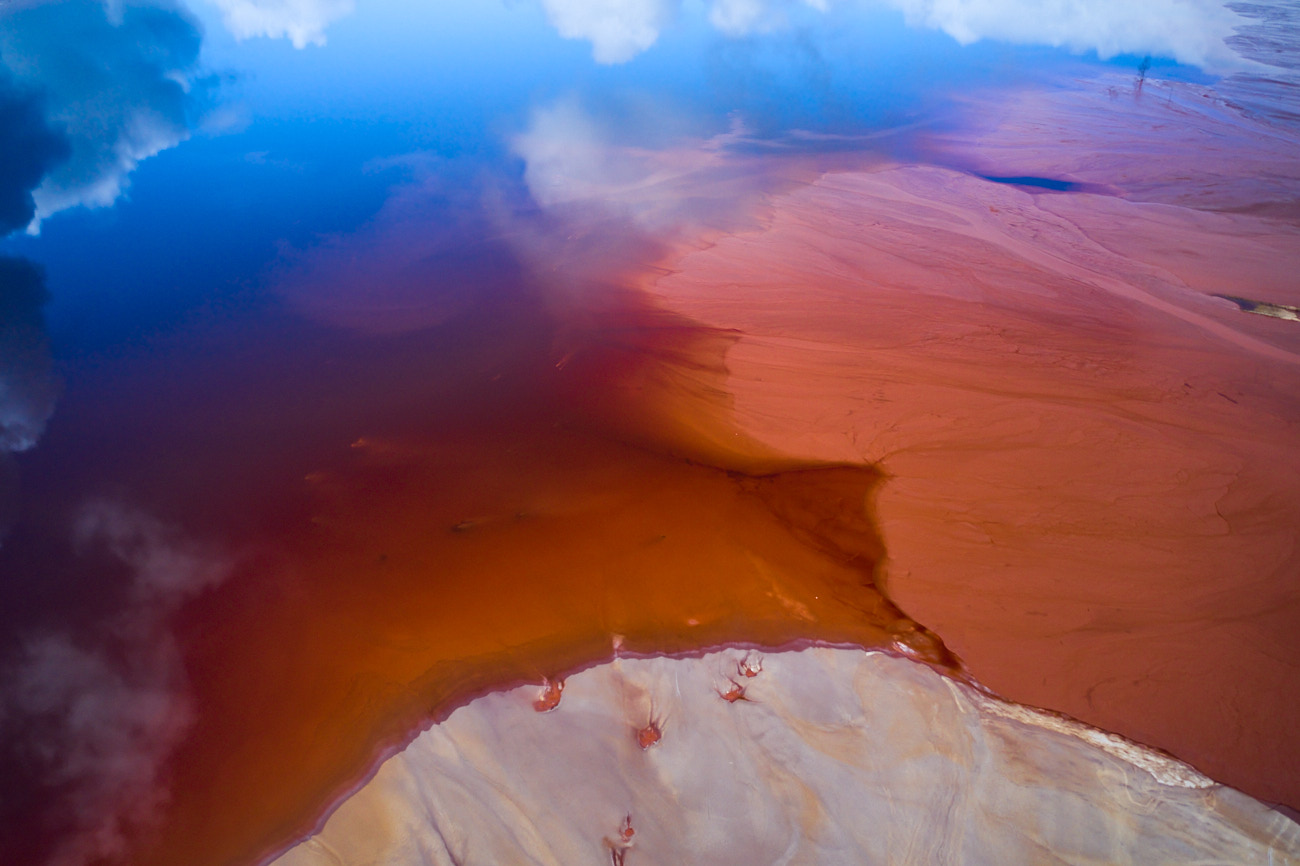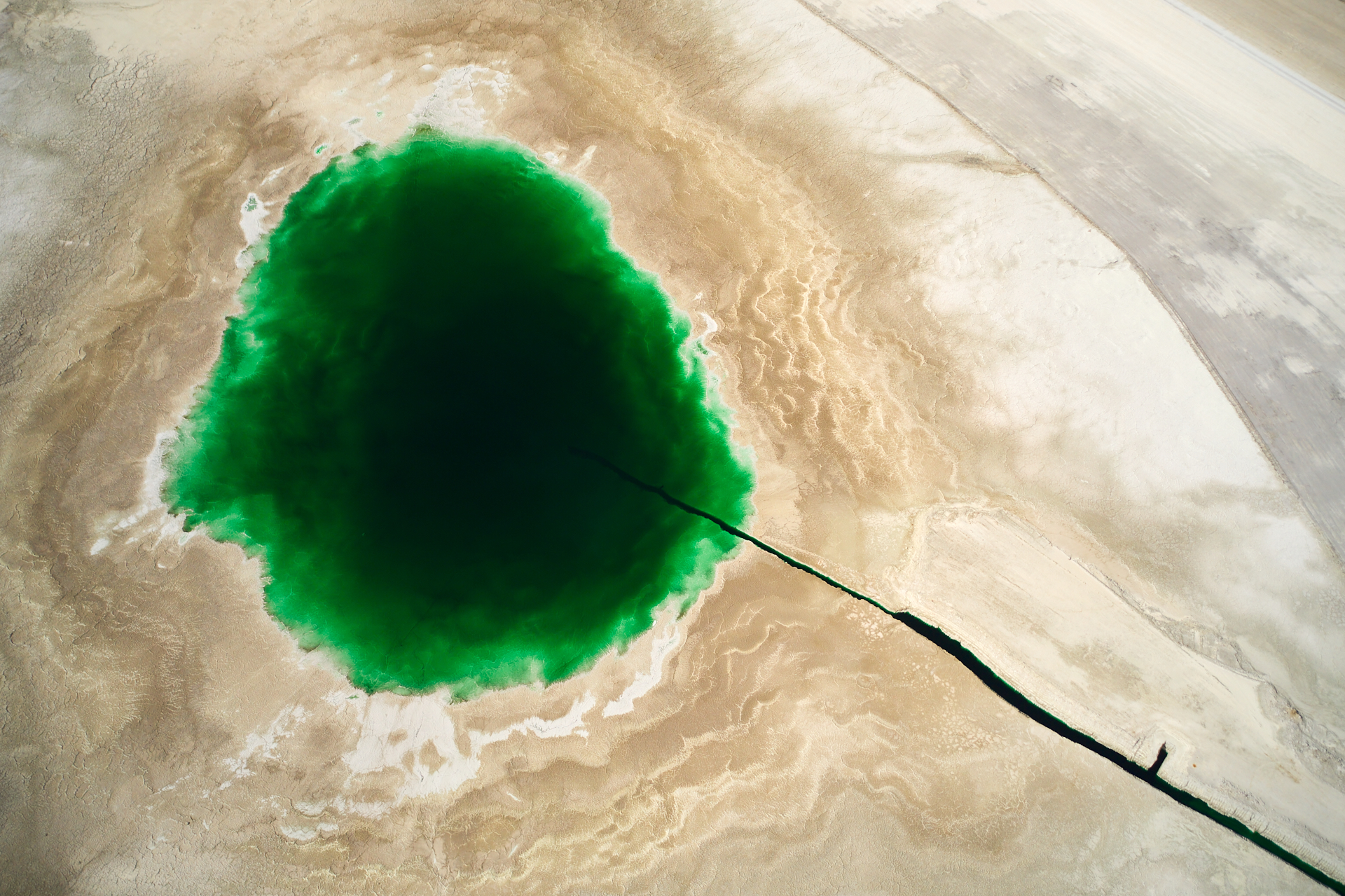Aerial photography of mining waste is not something new, but it has become very popular in the last years with the appearance of drones equipped with quality cameras at an affordable price in the market. Many nature photographers have been attracted by this fascinating world of colors, shapes and textures and we have incorporated this type of images into our portfolio.


While in other contexts we continue discussing the inclusion, or not, of human elements inthe frame, in this new discipline we leave behind all the prejudices and limitations about what nature photography should be and we dedicate ourselves to enjoying a visual spectacle.
The images obtained are very aesthetic but this should not make us forget that we are photographing toxic waste from mines and other industrial facilities. Nothing to do with nature.
Besides these theoretical discussions, we must also think about the potential danger to the environment that these ponds mean: seepage of toxic waste into the ground, aquifers contamination, etc.


Many nature photography contests, some of them of great international prestige, have contributed significantly to this paradox by awarding this type of image in categories such as art in nature. It may seem inconsistent that in several of these contests the presence of human elements in the frame is prohibited, except for categories such as ecological complaint or human impact on nature.
I have written down these reflections here without any intention of controversy or criticism towards anyone, since I am the first who enjoy this kind of photography; I simply needed to express my feelings and I would be satisfied if we, nature photographers, reflected on this issue and we were aware of what we are photographing and what we want to do with our images.
Thank you so much for spending your precious time reading this short article.
Javier Lafuente
www.javierlafuentephoto.com